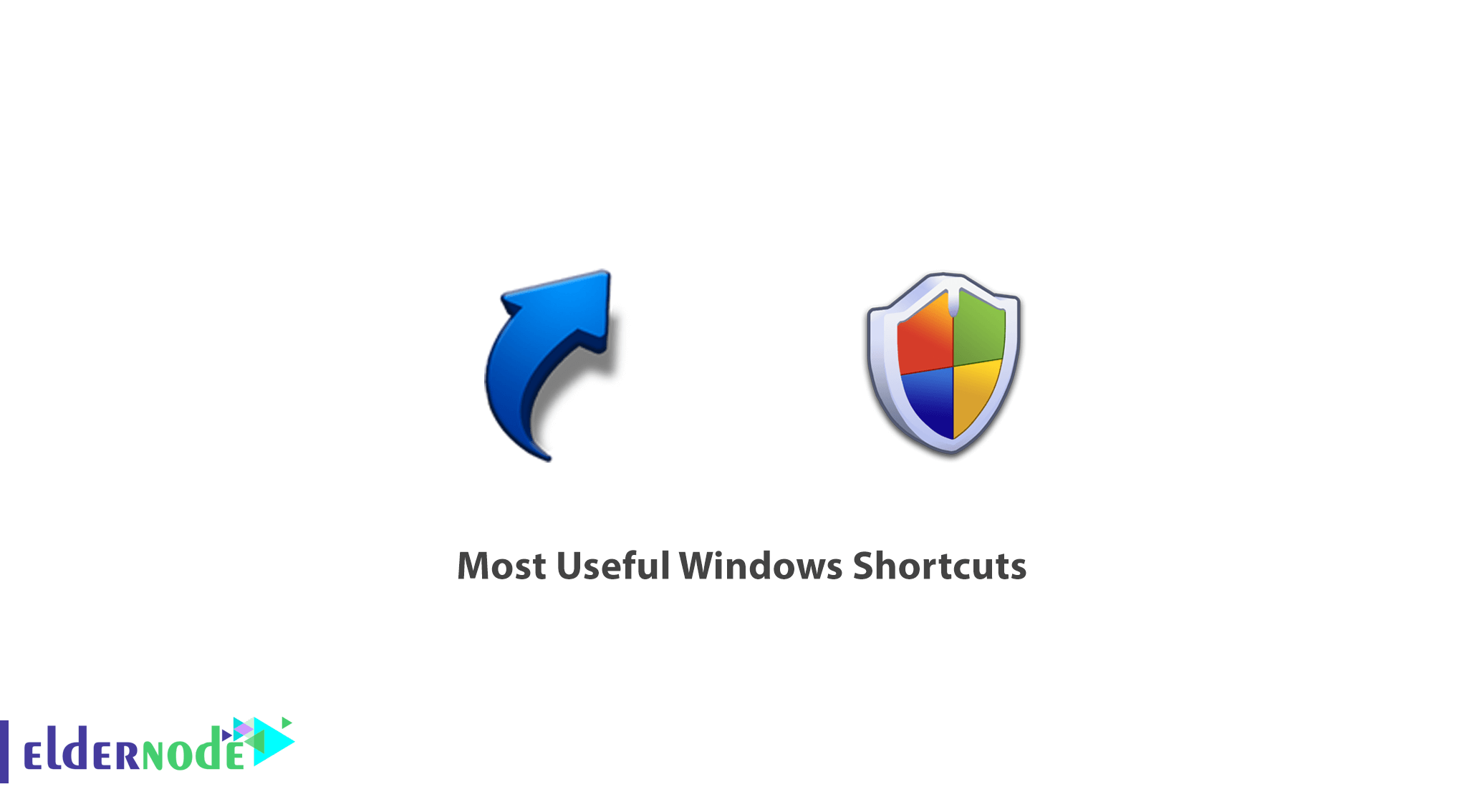
A shortcut is a set of one or more keys that call a command in an application or operating system. Shortcuts in Windows increase the speed and ease of doing things in the operating system. With these shortcuts, the user can perform some of his needs easily and by pressing the combination keys instead of moving the mouse. Many of you are familiar with some useful shortcuts, but in this article we are going to introduce you to the Most Useful Windows Shortcuts that you are less familiar with.
Table of Contents
Most Useful Windows Shortcuts
Before you continue, if you are a novice user of Windows, you should know that the Windows key means the button on the left side of the keyboard, located between the Alt and Ctrl keys, on which the Windows logo is usually drawn. The list below is a list of 20 of the most important Windows shortcuts that will help you during your daily tasks.
Windows + Spacebar
If you want to view the Windows desktop for a few moments and then immediately return to the previous state (view active windows), use the Windows key combination plus the Spacebar. As long as you hold down these two keys, the handcuff screen will be displayed, and immediately after releasing these two keys, return to the window or running programs.
Windows + T
By using this shortcut, you can see a small preview of the windows that open in the Taskbar. Pressing Windows + T repeatedly will see a preview of the first to last set of running programs. You can do the same by hovering the mouse pointer over any of the icons in the Taskbar.
Windows + 1,2,3, …
In Windows 7 and later, a new way to add useful software has been added to the Taskbar, and the user can right-click on any icon in the window and select “Pin this program to taskbar“. Add your desired program or window to the toolbar. After pinning the desired software, the user can always run the desired software quickly and by clicking on the relevant icon. Now, in addition to using the mouse, you can access the pinned software in the toolbar from left to right by pressing the combination keys Window + 1 or 2 or 3, etc.
Windows + / –
If you want to zoom in on the screen while reading texts or viewing images, you can run the Windows Magnifier software by pressing the Windows key and + or Windows key combination and zoom in or out on the Windows screen. These shortcuts can be used in all software running on Windows.
Windows + Shift + Left or Right
Left or Right keys are the keys with the left and right arrows next to the up and down arrows on the right side of the keyboard. If you are using two monitors to make the most of your desktop space, you may want to use one of the monitors as your home screen and the other monitor screen to display active and running programs. You can use the mouse and drag and drop windows to move them from one monitor screen to another, or use the Windows + Shift + Right or Left key combination.
Windows + M or Windows + D
You can minimize all windows and applications on the screen by pressing the Windows + M key combination. That is, move them all from the screen to the Taskbar by pressing the Windows + Shift + M key combination to return to running software. The Windows + D key combination works almost identically to Windows + M. Windows + D Minimizes all the software on display. Try both key combinations to see the slight difference between the two.
Shift + Ctrl + N
Creating a new folder in Windows is very easy. You can always create a new folder in Explorer by right-clicking and selecting Create New Folder. But the simpler solution is to use the Shift + Ctrl + N key combination. Pressing these key combination quickly creates a new folder, and you can create a new folder after renaming it and pressing the Enter key.
Windows + X
You can access the Windows Mobility Center settings using the Windows + X key combination. These settings include monitor brightness, display of battery life and the possibility of changing consumption conditions, turning on and off the wireless network, increasing or decreasing the output sound and Presentation mode, and using the projector. This shortcut only works on mobile devices such as notebooks.
Shift + Delete
By default, any file that is deleted by pressing the Delete button is actually transferred to the Recycle Bin. In fact, they are not deleted so that the user can recover the desired file through the Recycle Bin if deleted incorrectly. Now if you do not want the deleted file to be transferred to the Recycle Bin and deleted directly, you can use the Shift + Del key combination.
Windows + L
You can lock Windows by pressing the Windows + L key combination. For example, if you plan to leave your desk for a few minutes at work, you can lock Windows to make sure no one else has access to your computer when you are away. Of course, this requires a password for your active username.
Ctlr + Z
Ctlr + Z is a savior, no matter what you do or where you are. These combination keys have the role of going backwards. Every program you work with supports this shortcut key. So do not worry about your mistakes.
Ctlr + A
Again, no matter what program you use, this shortcut key can select all the text, documents or elements of the program you are using. No need to drag the mouse, Ctrl + A is more useful than you think.
Ctrl + C
After selecting part of the text, you can use these key combination to copy that text. This is one of the most important Windows shortcuts at the time. You can copy whatever you want and paste it whenever you want.
Ctrl + V
Paste everything you have copied with this shortcut. It can be text, file, photo or folder. If you want to paste plain text without formatting, you must also add a shift to this shortcut: Ctrl + Shift + V
Ctrl + X
If you do not want a text / table / image / file to remain in its current location, simply select it and use Ctrl + X to remove it altogether. This shortcut essentially deletes and copies the subject. Then paste it wherever you want.
Alt + Tab
This one is a bit limited and has been improved with the firmware upgrade. Simply press Alt and then tap Tab to move between the desired page / tab. You can also switch between pages while holding down Alt and pressing Tab. We are talking about multitasking.
Ctrl + Alt + Del
When a running application is delayed or unresponsive and your windows remain as they are, you have to use these keystrokes. You can do this by pressing Ctlr + Alt + Del. When you press these keys together, a magic box called Task Manager appears. Then you can close the relevant application / program this way and give new life to your computer.
Alt + F4
Just press the Alt key along with the F4 operation key and you will see the application close. All you have to do is be in the app. This shortcut key is smart enough to ask you to save your work before turning it off.
Ctrl + F
Ctrl + F is a great shortcut key for you to run a quick bar to type what you want. You can see all the results according to your desired keyword.
Ctrl + H
This shortcut is responsible for finding and replacing. Just press the corresponding keys to open a box. You can do this simply by typing traceable and replaceable entries. This shortcut works for most documents.
Conclusion
One of the charms of Windows is that for most activities, a shortcut key is defined and you will be able to perform the desired action simply in a fraction of the time by pressing the Windows shortcut keys. This will speed things up. For example, running some programs, minor changes, opening and closing windows, etc. all have defined shortcut keys. In this tutorial, we tried to introduce you to the Most Useful Windows Shortcuts.




